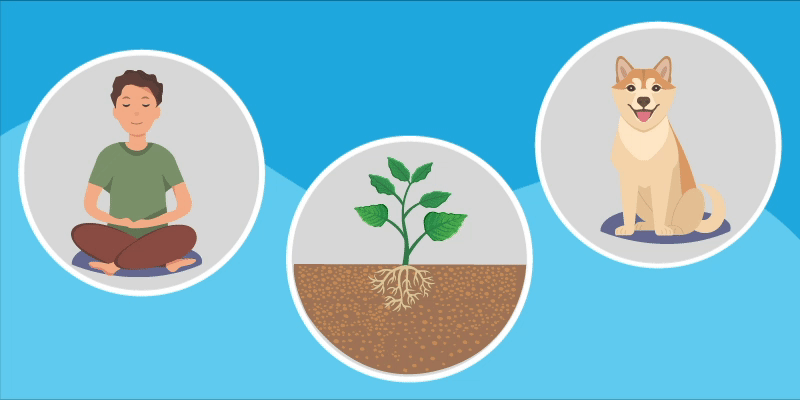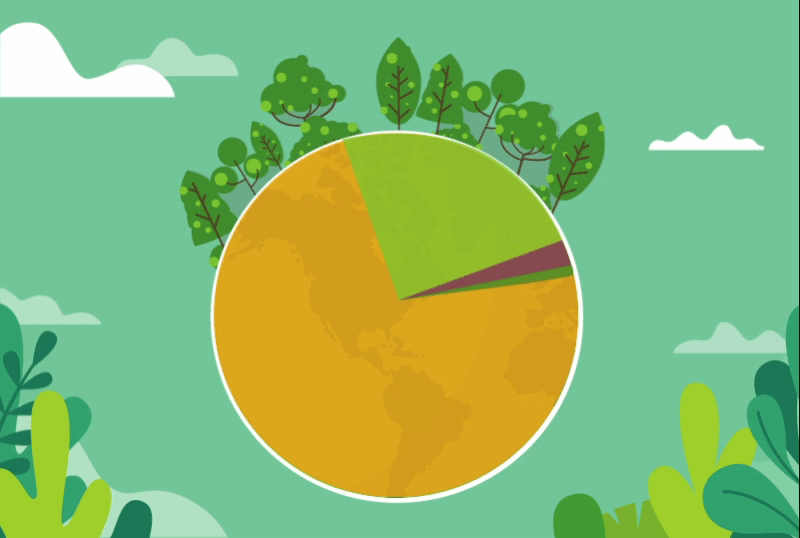
What is the one thing that you need the most to live and yet cannot be seen? Yes, it is oxygen! The air in Earth’s atmosphere comprises roughly 21 percent of oxygen, enough to support the lives of all living beings.

But why do we need oxygen to live and not any other gas? Are there any organisms that might live and reproduce without oxygen? Let’s find out.
Why do we need air?
Humans have great capacities to scale the highest mountain and survive in the harshest deserts. But we all live surprisingly fragile lives. We need three simple things the most: air, water and sleep! So why is air THAT important to us?
Breathing in air is one activity that we invariably do without thinking much. For example, while you are reading this sentence, you are unconsciously breathing in and out.

Oxygen is necessary to grow, reproduce and turn food into energy. Oxygen gives our cells’ the ability to break down complex food compounds into energy that our cells require to survive.
When we inhale, a large muscle called the diaphragm (say: die-uh-frum) flexes downward to help draw air into our lungs. Our lungs are one of the largest organs in our body that work together with the rest of our respiratory system to keep our body’s cells supplied with necessary oxygen.
Read More: What is the respiratory system?
As we inhale air, it travels through large tubes in our lungs called bronchi. The bronchi branch off into many smaller tubes called bronchioles. Did you know that the human body has about 30,000 bronchioles in each lung? At the end of each bronchiole are clamps of extremely small sacs called alveoli. They are so tiny that we have about 600 million alveoli in our lungs! These alveoli are covered with tiny blood vessels called capillaries. It is there that the oxygen in the air that we breathe passes into our blood.

The human respiratory system
From our capillaries, the oxygenated blood travels to the heart, where it is pumped out to the rest of the cells in our body. The cells in our body use this oxygen to convert the nutrients we eat into energy for our body. During this process, some waste products are produced. One of these waste products is carbon dioxide.
The answer is quite simple. Our body follows the same process that is used to bring in oxygen, just in the reverse order. While we breathe in oxygen, we breathe out carbon dioxide. Our blood delivers this waste gas to capillaries, which then gets transferred to alveoli and then our lungs. Our lungs push out the carbon dioxide gas when we breathe out. Imagine, all these activities taking place within a fraction of seconds, every single time we breathe in and out!
Now that you understand the importance of oxygen in our body, can you imagine organisms that can survive and reproduce without oxygen? Sounds impossible, doesn’t it? But the truth is that there are many tiny organisms that have proved their strange and fascinating ways of surviving without oxygen!
Any organism that can live without oxygen is called an anaerobic organism or anaerobe. Yeast is an example of an organism that can live without oxygen. There are also anaerobic bacteria that require no oxygen for respiration.
Recently, scientists discovered a life-form in a certain parasite that falls under the same category. Calling their discovery an accident, this team of scientists led by Dayana Yahalomi at the Tel Aviv University in Israel discovered a small, parasitic cnidarian — a relative of a jellyfish that parasites in salmon fish. This parasite apparently requires no oxygen to respire or grow. Called Henneguya salminicola, they are tiny alien-headed parasites with a long tail that feeds on the muscle tissue of salmon and other fish.

Salmon being infected by the parasite Henneguya salminicola
How did this animal gain the ability to survive without oxygen? It apparently lost its mitochondrial genome in the course of evolution.
Animal cells require mitochondria to process oxygen into adenosine triphosphate or ATP that keeps the cells running. Since the parasite does not have a genome to build it, it lacks mitochondria. “The ancestors of Henneguya almost certainly had mitochondria,” said Dayana Yahalomi. “All its closest relatives have mitochondria, so the evolution to an anaerobic lifestyle and loss of functional mitochondria appears to be a recent adaptation of that species alone — at least that we know of so far!” Now that’s an evolution we all are noticing in front of our eyes, isn’t it?
Read More: What is Genome?
Do you feel humans too will not require oxygen to survive in the future just like these tiny organisms? Let us know your thoughts in the comments below. Here are some interesting facts about blood and what role it plays in delivering oxygen. Ever wondered what will happen if the amount of oxygen is increased in the air?
Books are Tanaya Goswami’s first love and cheesecakes come a close second. Talking about movies, music, calligraphy, politics, and Elon Musk will get you listed under the friends’ section of her diary. Ever since moving on from her job as an English lecturer, she spends her time at BYJU’S crafting stories filled with emotion and sprinkled with sarcasm. Outside of work, she’s either learning something new (French, most recently!) or is curled up with a book and a cup of coffee. She firmly believes that discovering what you don’t know is the key to knowledge and is constantly working towards improving herself. Drop in a line at storyweavers@byjus.com if you liked her stories, have something nice to say, or if you have compelling ideas to share!